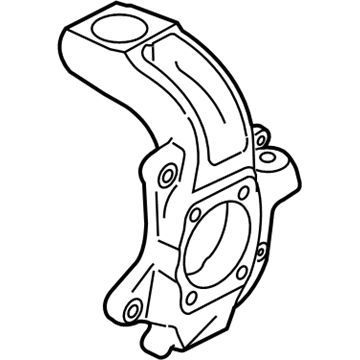FordParts
My Garage
My Account
Cart
OEM 2009 Lincoln MKS Steering Knuckle
Front Steering Knuckle- Select Vehicle by Model
- Select Vehicle by VIN
Select Vehicle by Model
orMake
Model
Year
Select Vehicle by VIN
For the most accurate results, select vehicle by your VIN (Vehicle Identification Number).
2 Steering Knuckles found
2009 Lincoln MKS Knuckle, Front Driver Side Part Number: 8A5Z-3K186-A
Product Specifications- Other Name: Knuckle - Front Wheel
- Position: Front Driver Side
- Base No.: 3K185
- Item Weight: 9.90 Pounds
- Item Dimensions: 9.6 x 7.0 x 13.4 inches
- Condition: New
- Fitment Type: Direct Replacement
- SKU: 8A5Z-3K186-A
- Warranty: This genuine part is guaranteed by Ford's factory warranty.
- Product Specifications
- Other Name: Knuckle - Front Wheel
- Position: Front Passenger Side
- Base No.: 3K185
- Item Weight: 9.40 Pounds
- Item Dimensions: 9.5 x 7.0 x 13.4 inches
- Condition: New
- Fitment Type: Direct Replacement
- SKU: 8A5Z-3K185-A
- Warranty: This genuine part is guaranteed by Ford's factory warranty.
2009 Lincoln MKS Steering Knuckle
If you're seeking quality and affordability, look no further than our extensive inventory of genuine 2009 Lincoln MKS Steering Knuckle available at FordPartsDeal.com. You can confidently purchase our OEM 2009 Lincoln MKS Steering Knuckle as they are supported by the manufacturer's warranty and our hassle-free return policy, alongside the benefit of our fast delivery service.
2009 Lincoln MKS Steering Knuckle Parts Q&A
- Q: How to service and repair the steering knuckle on 2009 Lincoln MKS?A: To maintain the steering knuckle, loosen the wheel, tire and hub nut. Unscrew the brake disc, tie rod and wheel speed sensor. Unscrew the lower ball joint nut and brush out the ball joint. Attach a hub remover to the halfshaft and fit the new knuckle and parts with all nuts tightened to the required torque. Reinstall the wheel and tire.













